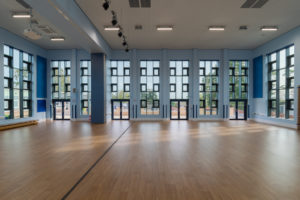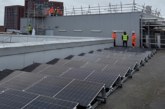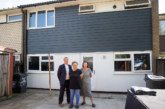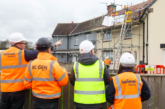Daniel West, Managing Director of West & West, explains the key electrical and mechanical upgrades that can enable schools to save energy and costs.
There has long been a need for schools to drive energy efficiency, yet many are still struggling to do so. The pressure to do more with less can mean that sustainability is pushed down the agenda resulting in reactive strategies that miss opportunities to save both energy and costs.
Taking a more proactive and tailored approach, which considers long-term benefits, can make a significant difference to a school’s carbon footprint and its budget.
LED technology
According to the Carbon Trust, lighting represents around 20% of a school’s energy costs, so is the best place for schools to start making improvements. Schools built before 2015 are unlikely to be using LED lighting, relying on halogen lamps instead.
Switching to LED technology will realise many benefits, especially in terms of maintenance. On average, a halogen lamp will require changing around every 18 months. Select the right type of LED and it could be 11 years before it needs replacing.
The key here is to invest in a high-quality LED lamp and not to be swayed by the lowest purchase price. Opting for a lamp around the £60 price range will generate significant savings further down the line as it could last twice as long as an LED that costs half that price.

Automatic lighting control
A lighting control system can drive further efficiencies. This technology can be used for a number of purposes, including dimming lights when required. Not only can this help to create a more appropriate teaching environment in certain classrooms, but consumption can be cut by up to 60% resulting in significant energy savings and costs.
Lights can also be dimmed to work in harmony with natural light in a classroom, providing an energy-efficient solution when lighting is required to be in continuous use.
In addition, smart controls can turn lights on and off if there has been no movement in a space for a certain time period.
Renewable energy technology
The use of renewables has been relatively low in schools, yet the technology provides one of the most cost-effective ways of harnessing green energy. Advances in technology mean that solar panels are now more affordable to purchase, and energy storage is more efficient. As large installations are often possible thanks to the size of a school’s roof, solar panels can significantly reduce electricity bills, save carbon emissions and generate a revenue stream over the long-term. They can also be used to help run equipment, which uses high amounts of energy such as a kiln in an art department, lowering consumption from the grid.
Another form of renewable technology suitable for schools is a heat recovery system, which prevents any heat from being wasted. A ventilation system feeds air in and out of a space. The heat from the stale air is extracted and returned to the fresh air that is circulating back into the system. This recycling of air can keep schools warm in the winter and cooler in the summer. This releases pressure on other heating systems, leading to lower fuel bills and carbon emissions as well improved comfort for students and staff.

Energy monitoring
Implementing an energy monitoring tool is a simple and highly effective way to make savings. There are various options depending on the needs of the school. For example, meter reading devices can be installed to measure energy consumption online over set periods of time helping to identify any unusual patterns or peaks in demand.
Peaks could be caused by leaving electrical equipment on unnecessarily, or less obvious issues such as time clocks being set wrong. We worked with a school to install a monitoring system, which identified that a hot water cylinder had been turning on in the evenings for years when it wasn’t required. Rectifying this issue saved the school thousands on their fuel bills.
Monitoring does not just rely on technology. The power of people should not be underestimated. Some simple checks by staff, and even students, can help to drive down costs and energy use. Ensuring that lights, sockets and computers are switched off at the end of the day can significantly reduce waste. Similarly, ensuring any faulty electrical items, including lights, are identified and fixed at the earliest opportunity is not only essential from a health and safety perspective, but can prevent bills from rising unexpectedly.
Striking the right balance
With the pressure growing on all of us to reduce our energy use, there is a growing need for schools to take action and be more proactive. Investing in electrical and mechanical upgrades can significantly boost efficiencies. With the right advice, these improvements can be tailored to specific needs ensuring any initial costs are hugely outweighed by savings on energy bills and lower carbon footprints.









